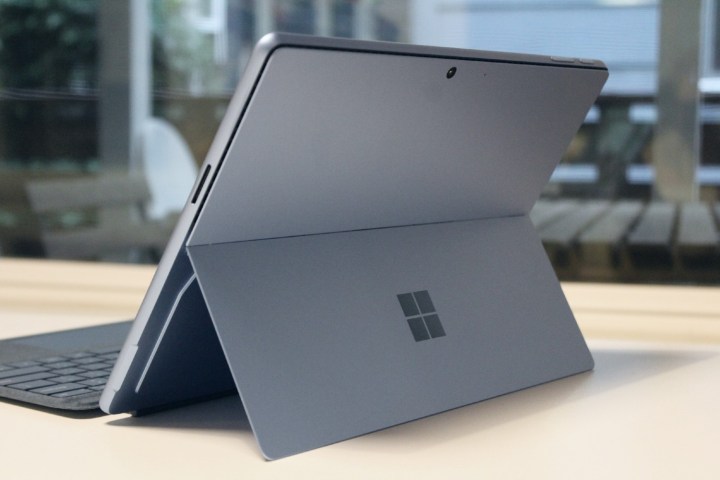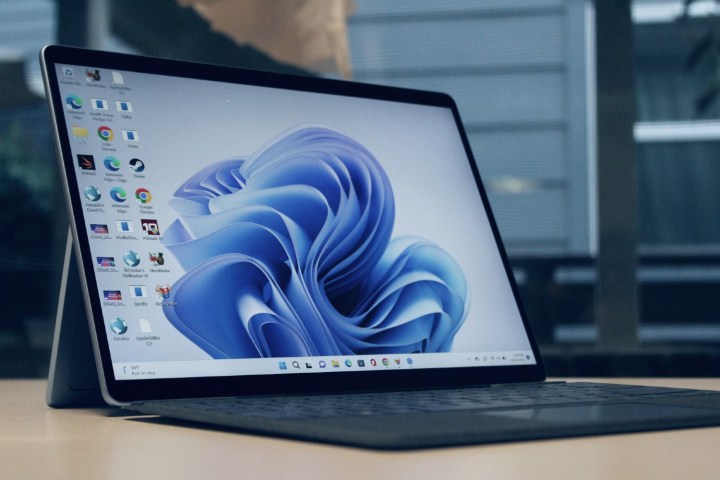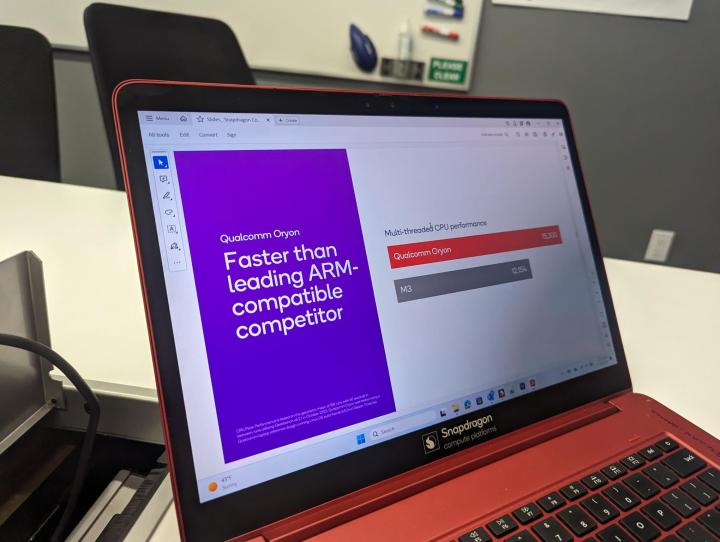
The Surface Pro hasn’t changed much over the years. The design has been tweaked slightly from generation to generation, but the central premise has remained. Its strengths have been bolstered, but its weaknesses have stayed around, too.
This year, however, the Surface Pro 10 is reportedly coming out. And unlike previous versions of the Surface Pro, this one might finally reinvent this device into something that profoundly fulfills the promise of what it always could be.
The problem of the 2-in-1

The 2-in-1 detachable is a form factor that’s been largely pushed by Microsoft — at least in the modern era. At its simplest, it’s a tablet that transforms into a laptop simply by attaching a keyboard. It’s the best of both worlds. In theory. The problem is that the Surface Pro has been full of compromises from the very beginning. Most notably, it’s never been an especially good tablet, especially when compared to the iPad.
In recent years, it’s become a more capable laptop replacement, though there have been trade-offs on that front, too. It now runs a full version of Windows 11, powered by the same Intel chips that appear in clamshell laptops. And while that ensures that the device is powerful enough, battery life and tablet use have gotten even worse.
Navigating the operating system without a mouse or touchpad isn’t so easy either, which is why there have even been experiments like the ThinkBook Plus Gen 5 Hybrid, replacing the Windows tablet with Android.
The limits of the form factor have been why Microsoft has largely been the only company to be able to make it work. The Surface Pro has become synonymous with the 2-in-1.

In an interview with Time Magazine in 2012, the CEO of Apple, Tim Cook, explained why the 2-in-1 wasn’t a good idea: “…anything can be forced to converge. But the problem is that products are about trade-offs, and you begin to make trade-offs to the point where what you have left at the end of the day doesn’t please anyone. You can converge a toaster and a refrigerator, but those things are probably not going to be pleasing to the user.”
A toaster and a refrigerator is a crude analogy, but you get the idea.
Of course, since that quote, Apple has gone on to make the iPad Pro, a device that is a 2-in-1 laptop in every way except name. It’s the better overall balance of laptop and tablet, but it struggles as a laptop replacement due to iPadOS.
A device that could actually replace both a laptop and a tablet without compromises — so far — has just been impossible. But with the Surface Pro 10, many of those problems could be resolved — if Microsoft plays its cards right.
A fitting anniversary

Microsoft has a chance to make this 10th anniversary of the Surface Pro a huge deal. Reports have indicated that the Surface Pro 10 will fully adopt the new ARM chip from Qualcomm — without even an Intel alternative. This isn’t just any new ARM chip, either. Qualcomm’s Snapdragon X Elite chips are being talked up as a true answer to Apple’s M-series chips, even claiming it can outperform the M3 by 21% in multi-core performance.
The Surface brand has flirted with ARM many times in the past, sometimes to disastrous results, but has often come back to traditional Intel chips. But as a tablet, this is a system that really belongs on ARM. Like the iPad, the efficiency of ARM would allow the Surface to excel as a tablet, improving battery life, system responsiveness, and fanless performance. It’d feel less like a laptop and more like a proper mobile device.
That means Microsoft could go back to making the future Surface devices thinner and lighter without sacrificing performance. In other words, a proper tablet that could really compete with the iPad Pro.
We may even see companies like Dell, HP, Lenovo, and Samsung re-embrace this form factor.
It’s more than just hardware needed to fix the Surface Pro, of course. Software is equally important, and I’m just hoping Microsoft can invest in some improvements to tablet usage. It’s not just blind hope, though.
Microsoft just so happens to be aligning an important Windows 11 Update, which was previously thought to have been named Windows 12. Although the focus will no doubt be on AI, I’m hoping there’s also room for some improvements to touch-exclusive interfaces. It could end up being rather ironic that Surface and Windows could be this in sync, since they’re no longer in the same division within Microsoft.

Either way, we’ve already got quite a lot of native Windows ARM app performance, and hopefully, that will, over time, translate to more touch-friendly apps, too.
Don’t forget — Windows 11 can already run some Android apps. What better reason to expand access to more app stores? Who knows — maybe we’ll even eventually get the Google Play Store someday.
Even more exciting is that every major laptop manufacturer supports this move to ARM, so the Surface Pro 10 won’t be out on its own this time. It’s not hard to imagine a future where companies like Dell, HP, Lenovo, and Samsung re-embrace 2-in-1 laptops.
Windows may never have the tablet app support that the iPad has, but if Microsoft can solve the hardware problem, it’s on its way to a Surface Pro that lives up to the potential the device always had.
Editors’ Recommendations




